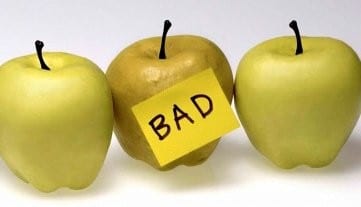Published on June 29, 2016
 It is not a brainer that any progressive organisation can’t afford to have bad hires. However it is also a known fact that companies do hire misfits and invariably ask people to go during or after the first 6 months, usually the probationary period.
It is not a brainer that any progressive organisation can’t afford to have bad hires. However it is also a known fact that companies do hire misfits and invariably ask people to go during or after the first 6 months, usually the probationary period.
In an article that appeared in Economic Times, it was quoted on behalf of SHRM, that an organization spends as much as 5 times of the annual CTC of a bad hire.
Irrespective of the final cost of a bad hire, it is proven beyond doubt that a bad hire takes the organisation backwards and can even derail the complete journey.
How do we avoid a bad hire? Let’s examine some of the hiring mistakes that we – HR fraternity commit.
- Lack of clarity on exact role
The HR usually gets a MRF (Manpower Requisition Form) along-with a JD and job specs. Many a times, the finer print is not explained to them, neither do they make effort to understand the exact role. In the process, a not so fit CV is perceived to be “best amongst the worst” & is chosen, resulting in deterioration of quality of hire.
- Not pre-screening the candidate
It is so essential to do a phone call, even for the local candidates. Spending 15 – 20 minutes on a phone call can eliminate several candidates before the face-to-face interview begins. During the telephone interview, one can cross verify some of the parameters related to qualifications, current remuneration – fixed & variable components, exact role being played in the current organization and his willingness to join, in case of an offer.
- Not prepared for the interview
It is extremely important for the interviewers to meet up before hand and plan for the interview. Who would probe in what direction, so as to evaluate the candidate from all attributes is crucial. For e.g. besides technical parameters, role fitment, cultural fitment, salary parity fitment is equally critical. So one should be clear about what questions to be asked. Besides, one should go through the CV carefully to detect any gaps or short tenures or any strong priorities of the candidate, to prepare well for the interview.
- Getting swayed by the mannerisms of the candidate
There is a saying that the first 5 minutes of the interview decides the fate of the candidate and next 35 – 40 minutes is taken to confirm the hypothesis made during the first 5 minutes. Invariably, these first five minutes are spent observing the candidate’s body gestures, his confidence, his pitch, etiquettes and eye contact etc. These are all-important parameters, but are these only parameters. Are we hiring for the candidate’s mannerisms only? What about other attributes? So one should give weightage to all the attributes before the interview begins and then decide the scores to take a final call.
- Not assessing for Cultural Fitment
Do we have tools and tackles to assess on the cultural fitment? Without any doubt if a candidate is not culturally fit, it can surely turn a good candidate to a complete bad fit. So in the absence of a) Knowing cultural competencies of the organisation & b) Lack of knowledge or skill set to assess the candidate on culture, it is bound to produce bad results.
Besides the above-mentioned points, it is also important to look for strong discreet references – a data that is good to be considered to ensure better success rate.
Forbes had an article stating that as many as 46% of new hires fail during the first 18 months. Even more surprising than the failure rate was the fact that out of such failures, 89% are failures on account of attitude and only 11% on account of lack of skills. This only proves that technical capability is easier to assess as compared to attitude. So need of the hour is to raise our capability standards to ensure we understand & decode the candidate better to ensure a good hire.

